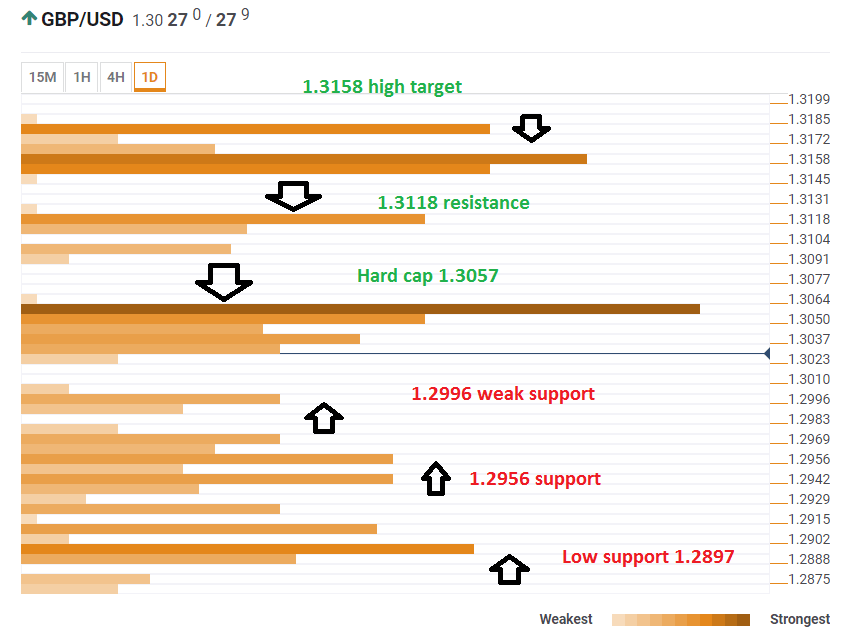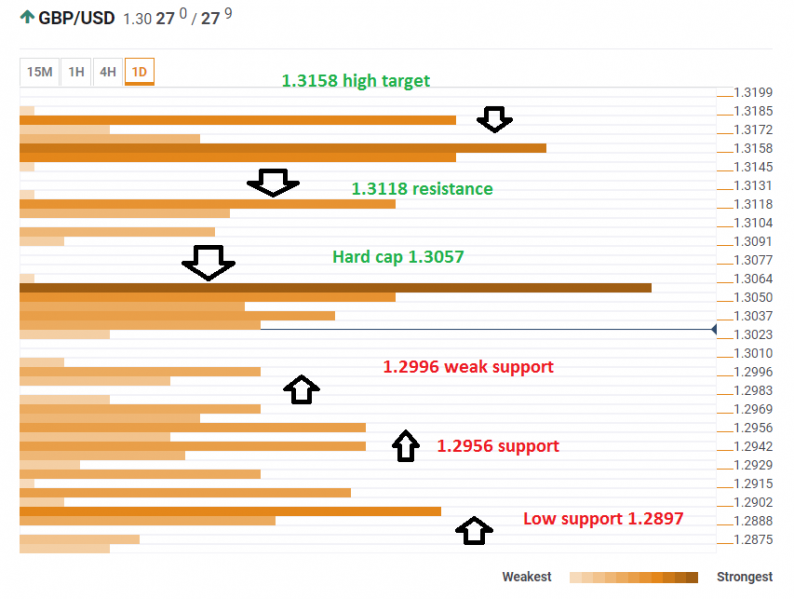The GBP/USD soared on the optimism in Brexit talks after a long standstill. The pair topped 1.3000. What’s next? Resistance lines look more substantial than support ones.
The Technical Confluences Indicator shows that a considerable cap awaits at 1.3057, where we see the convergence of the Bolinger Band one-day Upper, the Fibonacci 23.6% on-month, and the Simple Moving Average 50 one-day.
Next up we find 1.3118 which is the confluence of the potent Fibonacci 38.2% one-month and the Bolinger Band one-hour Upper,
1.3158 looms far above. It is the meeting point of two Pivot Points: the one-week Resistance 3 and the Pivot Point one-day Resistance 2.
On the downside, we see some support at 1.2996 which is the confluence of the Fibonacci 23.6% one-day and the SMA 5-4h.
1.2956 is the next cushion. It is the convergence of the PP one-week R1 and the SMA 200-4h.
There are quite a few other support levels on the downside, but the most significant congestion of lines is at 1.2897 where we see the SMA 100-1h, the SMA 5-one-day, and the Fibonacci 23.6% one-week.
This is how it looks on the tool:

Confluence Detector
The Confluence Detector finds exciting opportunities using Technical Confluences. The TC is a tool to locate and point out those price levels where there is a congestion of indicators, moving averages, Fibonacci levels, Pivot Points, etc. Knowing where these congestion points are located is very useful for the trader, and can be used as a basis for different strategies.
This tool assigns a certain amount of “weight” to each indicator, and this “weight” can influence adjacents price levels. This means that one price level without any indicator or moving average but under the influence of two “strongly weighted” levels accumulate more resistance than their neighbors. In these cases, the tool signals resistance in apparently empty areas.













Leave A Comment